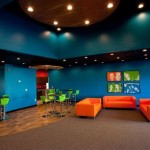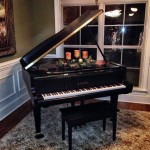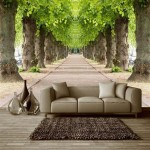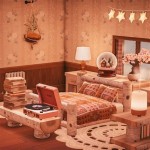How To Decorate a Traditional Wedding
Traditional weddings evoke a sense of timeless elegance and classic romance. Achieving this aesthetic requires careful consideration of various decorative elements, from the ceremony space to the reception venue. This guide outlines key aspects of traditional wedding décor, offering insights into creating a sophisticated and memorable celebration.
Ceremony Décor: The ceremony sets the tone for the entire wedding. Traditional ceremonies often take place in churches, chapels, or elegant outdoor settings. Floral arrangements play a crucial role in creating a reverent and romantic atmosphere. Classic choices include white roses, lilies, and hydrangeas, arranged in elegant pedestals or pew markers. Aisle runners, often white or ivory, add a touch of formality and guide the processional. Consider incorporating traditional elements like unity candles or ceremonial arches adorned with greenery and flowers.
Reception Venue: The reception venue provides a blank canvas for expressing traditional elegance. Popular choices include ballrooms, historic estates, and country clubs. Neutral color palettes, such as ivory, champagne, and blush, create a sophisticated backdrop. Elegant draping, chandeliers, and uplighting enhance the ambiance. Round tables draped in floor-length linens, adorned with classic centerpieces, offer a timeless appeal. Chiavari or banquet chairs add a touch of formality.
Floral Arrangements: Flowers are integral to traditional wedding décor. Centerpieces are a focal point of the reception. Elevated arrangements in silver or crystal vases create a dramatic effect. Low, lush centerpieces allow for easy conversation across the table. Garlands of greenery and flowers can adorn head tables, cake tables, and staircases. Consider incorporating seasonal blooms to reflect the time of year.
Table Settings: Table settings contribute significantly to the overall aesthetic. Crisp white or ivory linens provide a classic foundation. Fine china, silverware, and crystal glassware elevate the dining experience. Place cards with elegant calligraphy add a personalized touch. Consider incorporating charger plates and napkin rings for added sophistication. Menu cards printed on high-quality paper enhance the formality.
Lighting: Lighting plays a crucial role in setting the mood. Soft, warm lighting creates a romantic ambiance. Chandeliers, uplighting, and strategically placed candles add a touch of elegance. String lights can be used to create a whimsical effect in outdoor settings. Consider using pin spotting to highlight centerpieces and other decorative elements.
Wedding Cake: The wedding cake is a centerpiece of the reception. Traditional wedding cakes often feature multiple tiers, intricate frosting designs, and fresh flowers. Classic flavors like vanilla, almond, and chocolate remain popular choices. A beautifully decorated cake table, adorned with linens and floral arrangements, enhances the presentation.
Stationery: Wedding stationery should reflect the overall traditional aesthetic. Formal invitations printed on high-quality paper with elegant calligraphy set the tone for the event. Matching response cards, place cards, and menu cards create a cohesive look. Consider incorporating traditional motifs like monograms or floral designs.
Other Decorative Touches: Several other decorative elements can enhance the traditional ambiance. Guest books with elegant covers provide a lasting memento. Vintage picture frames can display family photos. Personalized favors, such as small candles or engraved trinkets, offer a thoughtful gesture. A designated lounge area with comfortable seating creates a relaxing space for guests.
Choosing a Color Palette: While ivory, white, and champagne are classic choices for traditional weddings, other color palettes can also be incorporated. Pastel shades like blush pink, light blue, and lavender can add a touch of romance. Rich jewel tones like burgundy, emerald green, and navy blue create a more dramatic effect. The chosen color palette should be reflected throughout the décor, from the flowers to the linens.
Working with a Professional: Planning a traditional wedding can be a complex undertaking. Consider working with a professional wedding planner or decorator. They can offer expert advice, manage logistics, and ensure that all the details come together seamlessly. A professional can help bring your vision to life, creating a truly memorable celebration.
Budget Considerations: Establishing a budget is crucial when planning a traditional wedding. Decorative elements can contribute significantly to the overall cost. Prioritize key elements, such as floral arrangements and lighting, and allocate funds accordingly. Explore cost-effective options, such as DIY centerpieces or renting décor items, to stay within budget.
Personal Touches: While adhering to traditional aesthetics, incorporating personal touches can make the wedding unique and meaningful. Family heirlooms, such as vintage jewelry or lace handkerchiefs, can be incorporated into the décor. Photos of the couple can be displayed throughout the venue. Personalized vows and readings during the ceremony add a special touch.
By carefully considering these elements, couples can create a traditional wedding that is both elegant and deeply personal, reflecting their unique love story while honoring timeless traditions.

50 Best Traditional Wedding Décor Ideas In South Briefly Co Za

190 N Traditional Wedding Decor Ideas In 2025

Umembeso Decor Sunika

20 Tswana And Sotho Traditional Wedding Décor 2025 Classy Umembeso Decor Ideas Briefly Co Za

52 Wedding Ceremony Decoration Ideas For Every Vision

Umembeso Decor N Wedding

10 Decor Ideas From Intimate Weddings That We Absolutely Adored Outdoor Wedding Decorations Traditional Planning

50 Best Traditional Wedding Décor Ideas In South Briefly Co Za

Latest Yoruba Traditional Wedding Decoration Ideas Legit Ng

Traditional Venda Wedding Decor Sunika
Related Posts







